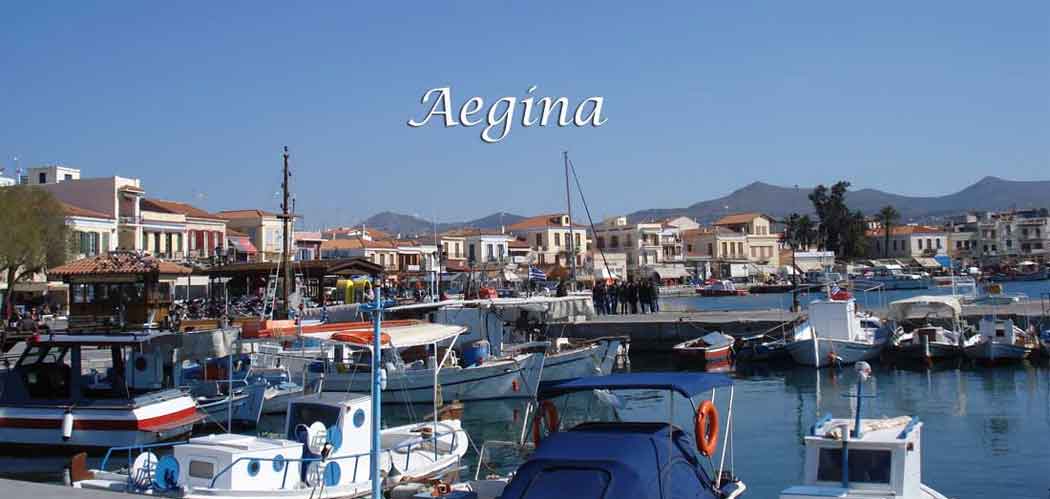The town of Aegina
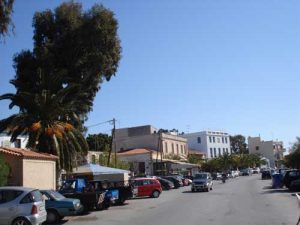
The first impression are the neoclassical buildings, which are located along the beach of the island, with their colors, in earth tones, beautifying at sunset.
The buildings in Aegina are examples of Neoclassical architecture with a strong folk element, built in the 19th century, they remain there as a reminder that Aegina was the capital of Greece for 2 years.
Many of these buildings house on their ground floor traditional coffee shops, patisseries, taverns, shops and bank branches.
Inside, the colorful houses with small yards, with trees and flowers, others blue, green, red and white, are located in narrow alleys, between picturesque shops and taverns.
You can take a carriage ride, walk through the narrow cobbled streets, between the mansions, the blue-domed Churches and see the folk art shops.
Don’t miss the fish market with its traditional ouzo snack shops, where you will taste fresh seafood with ouzo or tsipouro.
Shop from the grocery boats and don’t forget to buy the famous peanuts, from the unique peanut groves of Aegina.
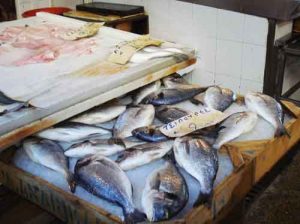
Take a tour of the picturesque alleys, where you will find beautiful cafes with shady courtyards, galleries, shops with ceramics, accessories, clothes and everything else you want and in the evening in the seductive atmosphere of the night, have fun and dance in the music venues of the city.
Within the city of Aegina you will find many interesting sights, which are worth visiting.
The Church of Agios Dionysios, Metropolis of Aegina, has in its yard the Einardian school, which was the school of teachers in the last century. This is where the first Greek government was sworn in after the Revolution of 1821.
The Markello Tower houses the Kapodistrian Religious Center of the Municipality of Aegina and the “Spyros Alexiou” Center for Social Issues. The ground floor of the Tower is now occasionally used as an exhibition space.
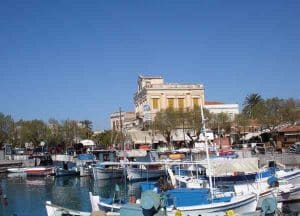
To the north there is the Mansion of Logistatides and the first Metropolis of the City, an Early Christian three-aisled basilica of the 5th-6th century with a mosaic floor, whose foundations and baptistery have been preserved.
The beauty of the island is undeniable and it has been preferred for many decades by many artists and writers,
Greeks and foreigners, who in Aegina find very rich History and many Art events.
The Antiquities that we find in the city of Aegina are the ancient City that dates back to Neolithic times (3000 BC) and the newer monuments that were created when the Town was for a short time the capital of Greece.
On the outskirts of the city there are archaic tombs, tombs of the Parchment era and the Byzantine Church of Agioi Theodoros two kilometers west of the city. The Church of Saints Theodore is a small single-aisled Basilica of the 13th century.
Very close to the port, to the left as we disembark is the archaeological site of “Column” as it is known from the unique column, a remnant of the Temple of Apollo Delphinium, Doric style, which dominated the hill. The hill of Colona was the Acropolis and the religious center of the Ancient city.
In the Ancient City, archaeological research has revealed the presence of more than ten settlements dating back to the early Bronze Age (3000 BC).
In the same area, apart from the ruins and the column of the Temple of Apollo, a series of buildings and the foundations of two smaller temples, the temple of Artemis and the temple of Dionysus, are also preserved.
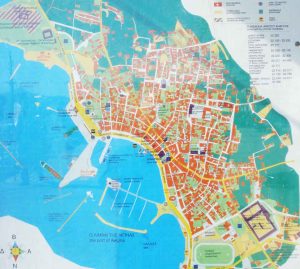
Further south there is what remains of the hero, dedicated to Aiakos, as well as a large part of the late Roman wall.
Today, the Archaeological Museum of Aegina is located on the site of the Kolona hill, where many of the finds from the excavations are exhibited.
Under the hill of Kolona, the traces of the piers of the famous “Hidden Port” of the ancient Aegina’s military port stand out even today. The entrance was fortified with turrets and closed with a strong chain.
There were also the neosoikos that housed the approximately 400 triremes that Ancient Aegina had in its heyday.
